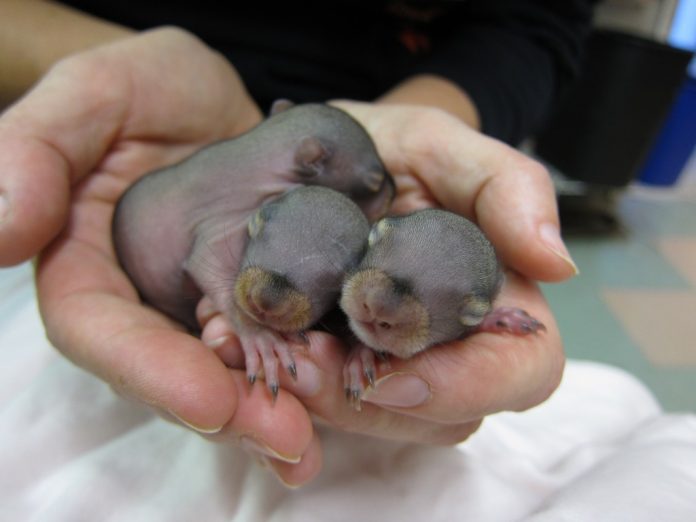Spring seems like the right time to tidy up your garden and prune your trees, but be careful – wildlife is probably already using those branches as a nursery as you read this.
Each day during the spring and summer months, WildCare’s Wildlife Hospital welcomes patients who have been orphaned through tree felling and other gardening activities. Young squirrels, whose eyes have not yet opened and whose bodies are not yet hairy, are particularly at risk from spring pruning, as squirrel nests (called dreys) look untidy and unkempt and are often located at the ends of branches.
A squirrel nest is actually something of an engineering marvel. The ragged exterior of broken branches and dead leaves is designed to camouflage multiple, carefully structured layers of vegetation and fibers to provide waterproofing and insulation. The layers get softer and finer towards the middle, and the heart of a squirrel drey provides a cozy haven for the tiny, pink baby squirrels to snuggle inside. Unfortunately, a single hit with the chainsaw can cause this intricately constructed house to fall to the ground.
So far in 2023, WildCare has taken in 15 baby squirrels. Five of them arrived after their nest was accidentally cut down by an arborist. The poor man felt terrible for destroying this squirrel family’s home and offered to reunite the babies with their mother. Unfortunately, the attempt at reunion failed, leaving these baby squirrels in foster care with trained volunteers until they are old enough to return to the wild.
Another nest of baby squirrels went down during one of the atmospheric river storms in mid-March. Although one baby squirrel did not survive, the other was plump and healthy. With the homeowner’s help, squirrel reunion experts placed the baby in a box (with the remains of the fallen nest and a heating pad set on low) at the base of the tree for his mother to retrieve.
This squirrel’s mother heard him cry and carefully hopped into the box. She used her teeth to gently pick her baby up by the scruff of the neck, then jumped up a nearby tree to her second nest. A happy ending for everyone.
Whenever possible, WildCare tries to reunite wild baby animals with their mothers. While the Wildlife Hospital is successfully raising orphaned squirrels, songbirds and other animals, it is in the babies’ best interests to stay with their mothers. A baby that is returned to its mother has the best chance of surviving, and WildCare Wildlife Hospital can conserve resources for orphaned wildlife babies who really need your help.
If a tree (or shrub or hedge) has an active nest, it will only take a few weeks for these young to mature and leave the area. Disturbing the active nest of a protected bird species is illegal (most species in the Bay Area are protected under the federal Migratory Bird Treaty Act), but once the babies have left the nest, trimming and pruning is possible.
If it is an emergency that requires the felling of a tree, you should keep a long and careful lookout for resident feral families. Keep in mind that animals intentionally camouflage their nests and even seasoned wildlife experts may have trouble spotting an active nest.
Always call WildCare’s Living with Wildlife Hotline at 415-456-SAVE (7283) if you find an injured or orphaned animal and if you think the wildlife may be at risk.
This spring, WildCare is asking you to “respect the nest,” which means putting off non-essential tree and garden chores. Please wait until the native animals have reared their brood, or even better, until the autumn breeding season is over.
Alison Hermance is Director of Communications and Marketing at WildCare. Marin Humane welcomes animal-related questions and stories about the people and animals in our community. Go to marinhumane.org, find us on social media at @marinhumane, or email lbloch@marinhumane.org.
www.marinij.com
https://www.marinij.com/2023/04/03/protect-baby-squirrels-by-holding-off-tree-trimming/











